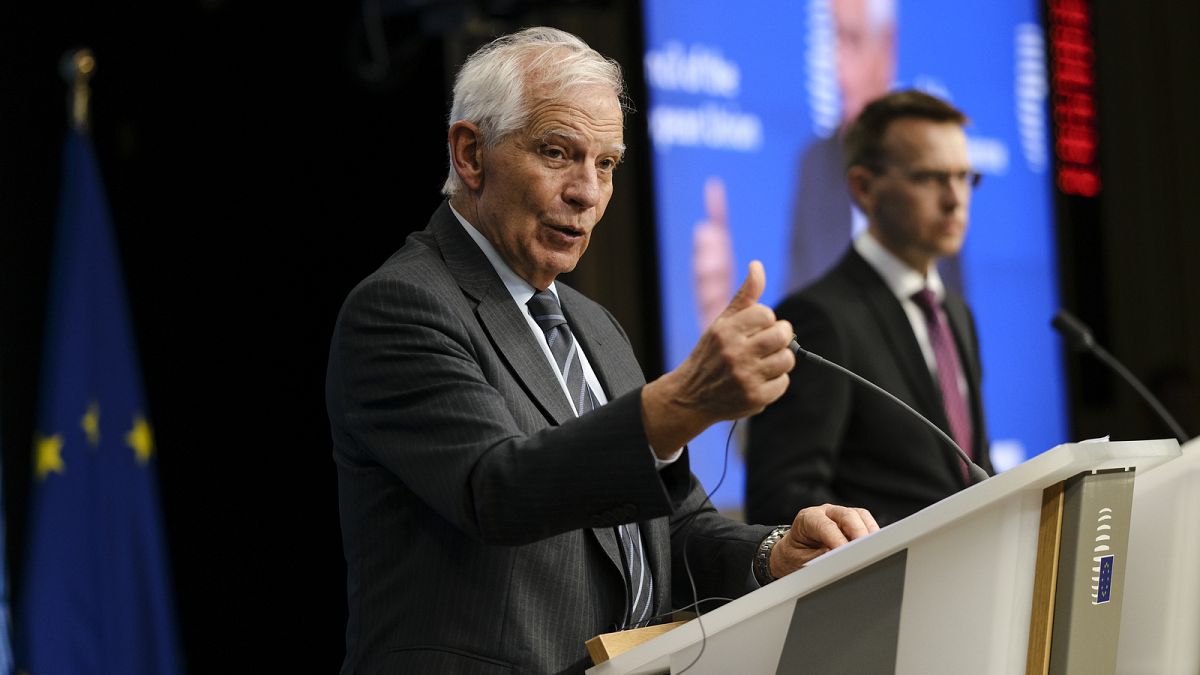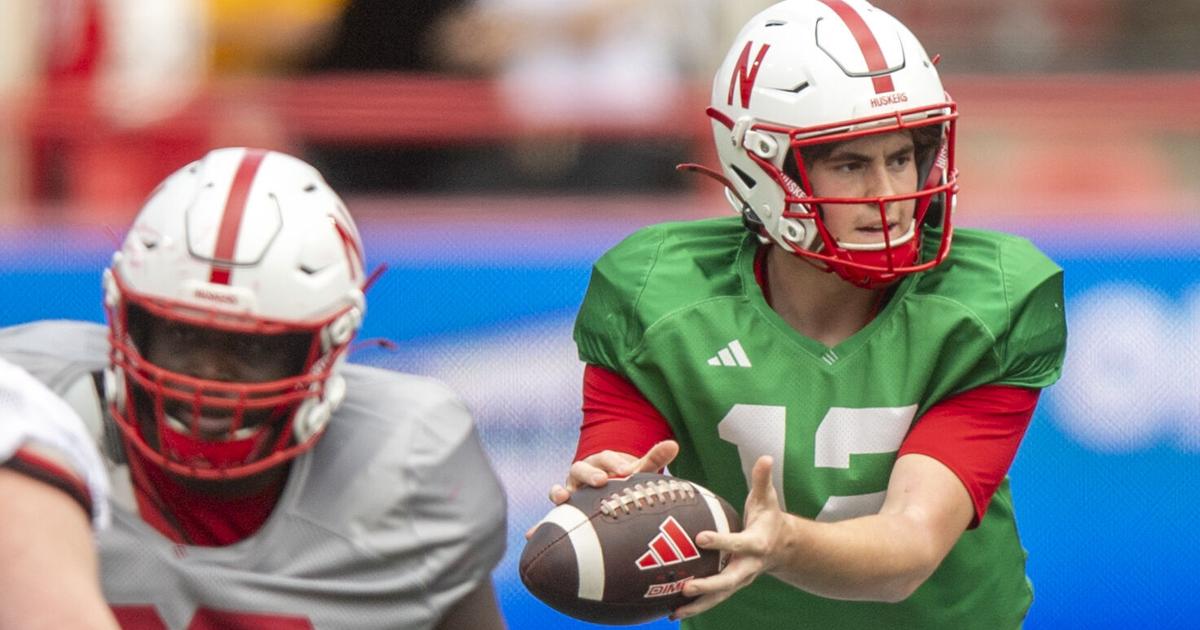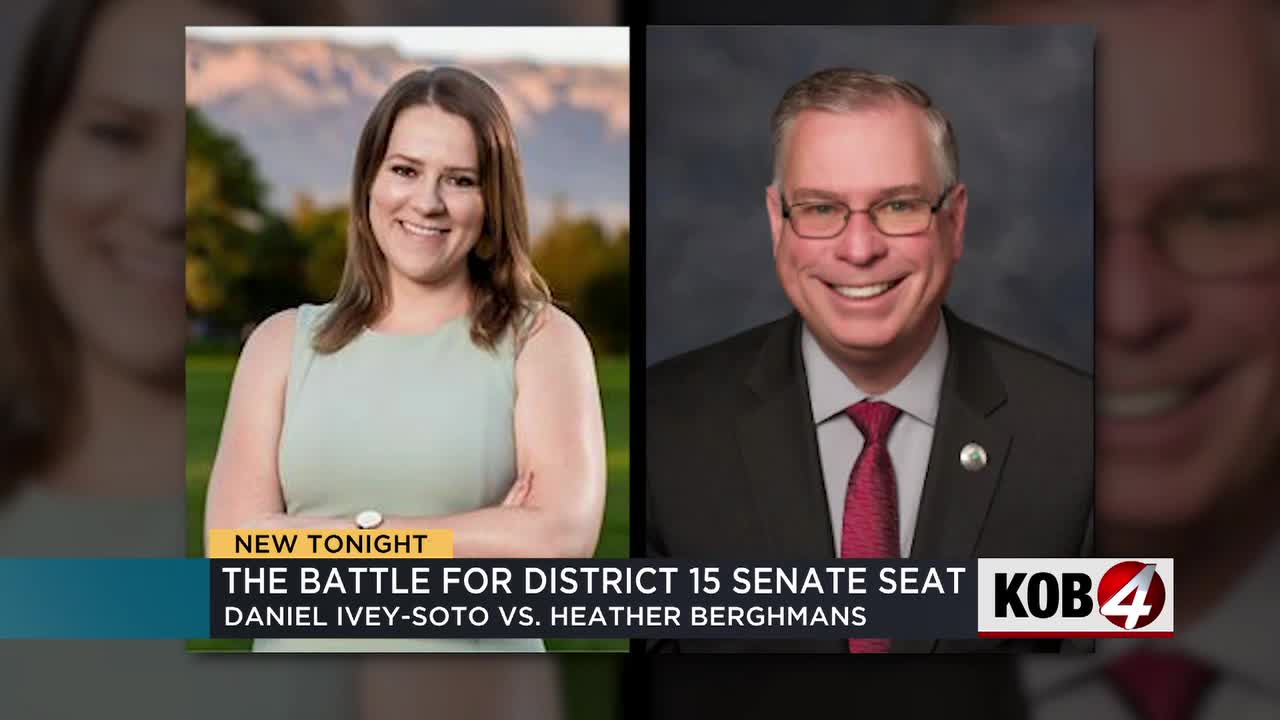Indiana
Indiana lawmakers move forward with bills to ban antisemitism, expand workforce training funds – Indiana Capital Chronicle

Indiana lawmakers are fast-tracking a bill they say will ban antisemitism in public educational institutions — although critics of the proposal maintain it limits free speech and conflates anti-Jewish rhetoric with criticism of a foreign government.
The legislation advanced from the House Education Committee on Wednesday in a bipartisan 12-0 vote, sending it to the full chamber.
Authored by Republican Rep. Chris Jeter, of Fishers, House Bill 1002 is a priority measure for the House GOP caucus.
Indiana law already bans discrimination on the basis of race and “creed,” which means religion. The legislation would specify that antisemitism — bias against Jewish people — is religious discrimination and is not allowed within the public education system.
The legislation uses a definition of antisemitism adopted by the U.S. State Department, U.S. Education Department and the International Holocaust Remembrance Alliance. And it makes clear that “criticism of Israel similar to that leveled against any other country” is not antisemitism.
“This bill does not tell anybody what they can or cannot say, does not tell anybody what they can or cannot do. There’s no new crime. There’s no police force enforcing it. It’s simply a reflection of our values as a state when it comes to teaching our youth and our students,” Jeter said before the House Education Committee on Wednesday. “We have a long tradition of support for our Jewish community, and particularly our Jewish students. This bill reaffirms that — it makes it clear that they’re going to be safe here.”
Jeter filed an identical bill in 2023. It passed out of the House in a 97-0 vote but never received a committee hearing in the Senate, effectively killing the proposal.
Sen. Jeff Raatz, R-Richmond, who chairs the Senate Education Committee, said last month that he expects his chamber to support the bill this time around.
Antisemitism on Hoosier campuses
Some 40 people testified on the bill Wednesday at the Indiana Statehouse. Many were students or faculty at Indiana colleges, including Indiana and Purdue universities. A handful of high school students also spoke before lawmakers, sharing stories about various antisemitic incidents in their classrooms.
Rabbi Sue Silberberg, executive director at IU Hillel, said the bill is a much-needed response to a problem she has “faced and struggled with” during her tenure at Indiana University.
Since the Hamas attack in October, she said antisemitic chalkings, drawings on bridges and flyers hung around the campus have prompted an increase of scared and crying students to her office.
“I’ve seen antisemitism regularly throughout my years at IU. Thankfully, IU has tried to address it,” Silberberg said. “But the overarching problem has been that Indiana does not have a clear and strong definition of antisemitism, and it is not specifically identified or called out as a problem and something that we stand behind prohibiting or stopping in our state.”
At Purdue, public health student Honor Fuchs said she has faced antisemitism “in the form of wildly biased curriculum, hateful posters on campus and outright verbal attacks from students.”
She described an experience last fall, when she and other Jewish students were “mobbed, yelled at and insulted by fellow students” while holding a fundraiser on the campus.
“I couldn’t complain, because being called a Nazi pales in comparison to the real persecution my grandparents faced in Nazi-occupied Romania,” Fuchs said. “It is horrifying that in 2024, in the United States, I have to make these calculations of gradations of bigotry and discrimination.”
Günther Jikeli, associate director of IU’s Institute for the Study of Contemporary Antisemitism, also supported Jeter’s bill, noting that criticism of Israel is not the same as “wanting to destroy this person or this community or this state.”
But more than two-dozen critics of the bill pushed back, many emphasizing that criticism of the Israeli government does not amount to antisemitism. Some warned of witch hunts under the vague definition.
Need to get in touch?
Have a news tip?
Daniel Segal, representing Jewish Voice for Peace – Indiana, said the bill “undermines the struggle against antisemitism and would thus make me and other Jews less safe in Indiana.”
“House Bill 1002 makes it harder to fight the scourge of antisemitism, because its sole purpose is to sow confusion about antisemitism. We cannot fight what we are confused about,” he continued.
“If people want to respond to criticisms of the Israeli state, they should provide reasoned counter arguments, not fake charges of antisemitism,” Segal said. “Defenders of the Israeli state resort to these fake charges of antisemitism only when they lack such reasoned counter arguments.”
He added that the legislation would also “trample education” by making teachers and students “fearful of speaking openly, in regard to the history and current events in Israel and Palestine.”
Echoing others who testified, Anisse Adni, an Islamic studies teacher in Indianapolis, said lawmakers should take out “vague and ambiguous language” in the bill “that would restrict our constitutional right to freedom of speech.”
“If I, as an American citizen, have the right to criticize my own government’s policies — if I have the right as an American to ask my government to right its wrongs, to change its policies — and I have no fear of punishment or reprisal because free speech is enshrined in the constitution … Why would I, as an American, be okay with my right of free speech being impeded or restricted when criticizing a foreign government’s policies? It shouldn’t be wrong.”
“I’m not anti-Chinese if I criticize China’s government policies or their behaviors or whatever it may be,” he continued. “We should not conflate antisemitism with criticism of the Israeli government and its policies.”
Fixes to last year’s workforce training legislation
House lawmakers additionally advanced a bill that seeks to make fixes to a major work-based learning bill adopted during the 2023 session.
The new measure, House Bill 1001, authored by Rep. Chuck Goodrich, R-Noblesville, primarily seeks to allow money from the 21st Century Scholars program and Frank O’Bannon grants to be used by high school graduates for training by an approved intermediary, employer or labor organization — rather than for education costs at a college or university.
The bill would also permit annual career savings account (CSA) grants to be used by students to cover costs associated with obtaining drivers licenses, and extend the timeline for completing CSA applications.
Last year, Goodrich similarly authored HEA 1002, which put in motion statewide career-centered education and training programs that seek to graduate Hoosier students who are better prepared for the workforce. Paramount to that legislation was a provision to establish CSAs for students in grades 10-12 to pay for career training outside their schools.
Participating students can use the $5,000 CSAs to pay for apprenticeships, career-related coursework, or certification.
Goodrich said his 2024 bill “widens the scope” of how those funds can be used and “removes barriers” faced by some Hoosier students who tried to access technical education and work-based learning opportunities over the summer.
Democrats on the committee took issue with multiple provisions in the bill, however.
Rep. Ed DeLaney, R-Indianapolis, pointed to language that expands the use of state-sponsored scholarships, which he said leaves out spending cap stipulations or specific restrictions around what funds can and can’t be used for.
“We’re going to enter into the program without any guidance for how much we’re going to spend?” DeLaney questioned.
Committee chairman Rep. Bob Behning, R-Indianapolis, said the Indiana Commission for Higher Education (CHE) will instead have to decide when 21st Century and Frank O’Bannon funds are eligible for students post-high school.
Democratic Rep. Vernon Smith, D-Gary, also expressed concerns over the provision to fund drivers licenses.
“Are we going to start buying used cars, too? Will the next step be uniforms, or technical equipment, coming out of the scholarship accounts?” he asked.
Goodrich said in response that access to transportation “has been a huge issue for kids getting access to opportunities.”
Before voting on the bill, the committee unanimously adopted two amendments offered by Goodrich; one to clarify data reporting requirements associated with work-based learning programs, and another to add teaching to Indiana’s Next Level Jobs Employer Training Program grants.
DeLaney offered other amendments but they all failed.
The bill passed out of the committee in a 9-4 vote along party lines. DeLaney promised to call additional amendments to the bill on the House floor.
GET THE MORNING HEADLINES DELIVERED TO YOUR INBOX

Indiana
Indiana Recognized For Work To Strengthen Families With In-Home Supports, Reducing Number Of Children Entering Foster Care

Photo provided by the Indiana Department of Child Services.
News Release
INDIANAPOLIS — The Indiana Department of Child Services has received national recognition for its Indiana Family Preservation Services program, which provides in-home support to strengthen families and improve outcomes while reducing the number of children entering the foster care system.
The program, which launched in June 2020, has been designated a promising practice by the California Evidence-Based Clearinghouse for Child Welfare. The program also was highlighted as an example of how new approaches to child welfare practice can enhance child and family well-being in an April report by the Christensen Institute.
On Wednesday, May 23, David Reed, MSW, LCSW, CSAYC, deputy director for child welfare services at DCS, spoke about the program’s positive impact before the U.S. Senate Committee on Finance.
The Indiana Family Preservation Services program is designed to keep children in their home when it is safe to do so. It achieves this goal by helping families understand and implement best practices for parental resilience, child development and social connectedness.
The program also can provide other support, such as financial assistance, when not doing so would result in children having to enter foster care. Most importantly, all services are coordinated by a single provider, easing the administrative burden on families by working with a single point of contact.
“Entering foster care and being separated from family is traumatic for children,” Reed said. “When we can provide the support that allows children to remain safely at home, we see vastly improved outcomes and healthier relationships over the long term.”
Reed noted the program has resulted in children being safer, with fewer children experiencing repeated maltreatment than before its launch.
Additionally, since the federal Family First Prevention Services Act passed in 2018, DCS has:
- Reduced the number of children in traditional out-of-home foster care by 50 percent
- Reduced the number of children in residential facilities by more than 50 percent
- The Indiana Family Preservation Services program has played a critical role in those outcomes.
Since its inception, Indiana Family Preservation Services has served more than 27,000 children and 14,000 families.
Indiana
Homers, gems and steals: Vote for IndyStar softball players of the week (Sectionals)

IHSAA softball sectional: Cathedral routs Lawrence North to advance
Anna Moore, Mary Hughes and Aubrie Wright following Cathedral’s run-rule win over Lawrence North in the Sectional 10 championship game.
IndyStar will be recognizing the top softball players in Indiana with our players of the week poll.
Scroll to the bottom of the article to vote. Voting is open until 3 p.m. TUESDAY.
We may be doing Players of the Week for regionals. Stay tuned for details!
Congratulations to Heritage Christian’s Naomi Swisher on being voted Player of the Week for May 13-18! The freshman doubled twice, scored two runs and drove in five more in a 15-2 win over Brebeuf.
Here are this week’s nominees.
Insider: Ranking Central Indiana’s 15 sectional champions entering regionals
Regionals: Statewide pairings, schedule, scores
Reagan Bauer, Mooresville
Bauer pitched a five-inning perfect game with nine strikeouts vs. Martinsville in the sectional quarterfinals, went 2-for-4 with three runs and two RBIs against Bloomington North in the semis, then clocked a couple more hits and scored twice in the championship game vs. Center Grove. The junior batted a career-best .347 with 14 RBIs, 28 runs and 10 doubles.
More: Pios made Center Grove ‘earn everything’ in sectional final
Morgan Burgess, Gibson Southern
The senior delivered at the plate and in the circle. She totaled four hits, five RBIs (two in the semis vs. Evansville Memorial and three in the final vs. Princeton) and two runs. Burgess also pitched six innings in the sectional semifinal vs. Evansville Memorial, striking out five and allowing only one earned run (two total) on four hits over six innings.
Elise Coleman, Floyd Central
The sophomore homered twice, doubled once, drove in four runs and scored thrice in a 9-1 title-clinching win over Jeffersonville. Coleman also had an RBI single in a 7-4 semifinal win over Jennings County.
Brylie Couch, Triton Central
The junior pitched a no-hitter in the semifinals vs. Heritage Christian, racking up 13 strikeouts and issuing only one walk. Couch also had a hit and an RBI, then went 2-for-3 with a double, a homer, two RBIs and three runs scored in the championship game vs. Scecina.
Leilani Forshey, Greenfield-Central
The junior hit her 13th homer of the season and drove in three runs in GC’s semifinal win over Mt. Vernon, then collected three hits and three RBIs in the final vs. New Palestine. Forshey finished the season batting .419 with 31 hits, 34 RBIs, 23 runs scored and 13 home runs.
Holly Garrett, Beech Grove
Garrett scored twice against Purdue Poly, then delivered in the bottom of the seventh vs. Speedway. With the score tied at 3, the senior ripped a one-out double to left, stole third and came in to score the winning run on a Kylee Robinson base hit. She also had two assists and a putout in the field.
Riley Janda, Center Grove
Janda was held hitless in the semifinals against Bloomington South, but she took off against Mooresville, going 3-for-4 with two doubles and a homer. She scored once and recorded four RBIs, giving her the school’s single-season record with 59.
‘They’re going to go far.’ Healthy, confident & hungry Center Grove claims sectional title.
Caitlin LaFerney, Yorktown
The senior hurler led the Tigers back to regionals. She pitched a two-hit shutout with 15 strikeouts and only one walk in a 12-0 win over Centerville (6 innings), then allowed only two runs on five hits with six strikeouts and zero walks in a 4-2 win over Jay County in the final. LaFerney also had three hits and an RBI vs. Centerville.
Emma Luther, New Prairie
Luther delivered a two-run go-ahead home run in the top of the sixth in the sectional championship game vs. Jimtown. She finished the game 1-for-2 with two walks, two RBIs and a run scored. The senior had hits against South Bend Riley and South Bend Washington, with an RBI vs. Riley and a run scored vs. Washington.
Anna Moore, Cathedral
The Purdue commit finished a double shy of the cycle vs. Pike, going 3-for-4 with five RBIs, three runs and a couple steals, then matched her hit total vs. Lawrence North with four runs and a couple RBIs. She also cleared two milestones last week, reaching 50 hits and 50 runs for the season.
Sydney Oliver, New Palestine
The senior logged a hit, an RBI and a run scored vs. Muncie Central, then picked up three hits, three RBIs and three runs vs. Pendleton Heights and two hits and two RBIs vs. Greenfield-Central. Oliver, who tripled twice, was also perfect on six chances in the outfield with five putouts, an assist and one highlight-reel double play vs. the Arabians.
‘Everyone was spectacular.’ New Palestine’s flawless fielding highlights semifinal rout
Ava Poulson, Huntington North
The senior twirled two one-hit shutouts to punch the Vikings’ ticket to regional. Poulson issued only one walk in both outings, and struck out 13 vs. Fort Wayne South Side (five innings) and eight vs. Columbia City. She also collected four hits (two triples), four runs and two RBIs at the plate.
Sydney Rainford, North Newton
The junior pitched all 10 innings of Saturday’s sectional championship game vs. Illiana Christian, allowing four unearned runs on five hits with a walk and 12 strikeouts. She also logged a hit, two walks and two steals in the 5-4 win. Rainford pitched a four-hit shutout with 11 strikeouts in the semifinals vs. Hammond Bishop Noll and a five-inning perfect game with 14 strikeouts vs. Whiting in the quarterfinals.
Maddie Rose, Castle
Rose clocked a double and two runs in an 11-1 win over Evansville Reitz, then collected a couple more hits (one homer), three runs scored and four RBIs in a 13-0 rout of Evansville North in the championship game.
Logan Rumble, Penn
The sophomore helped ensure a stress-free three-game run through sectionals for the defending 4A champions, collecting seven hits, five runs and six RBIs. Her collection of hits included doubles in each game and a grand slam in the final vs. Elkhart.
Paige Stires, Lapel
The sophomore played a big role in the Bulldogs’ run to a second consecutive sectional title. She went 3-for-4 with a double and a run scored in a 2-1 win over Frankton, then collected two more hits and another run scored vs. Alexandria-Monroe.
More: Free of pressure, expectations, Roncalli softball looking to make a name for itself
Hannah Sutton, Avon
The senior Murray State commit went 4-for-7 (.571 average) with a couple home runs and five RBIs as Avon won its fourth consecutive sectional title. Sutton accounted for two hits (one homer), three RBIs and a run scored in a 7-1 win over Plainfield in the semifinals.
Grace Swedarsky, Hamilton Southeastern
Swedarsky pitched a two-hit shutout with 12 strikeouts vs. Westfield, a no-hitter with 17 strikeouts and only one baserunner (hit-by-pitch) in the semifinal vs. Zionsville, then struck out 12 vs. Noblesville to lift Hamilton Southeastern to its first sectional title since 2017.
‘The umpires are wowed. I am, too.’ Grace Swedarsky tosses no-hitter in sectional semis
More: Grace Swedarsky keeps mowing ’em down, HSE wins first softball sectional title since 2017
Payton Wulf, South Bend St. Joseph
The freshman shined through the final two rounds of sectionals, collecting three hits and five RBIs. She was excellent vs. Mishawaka in the final, going 2-for-4 with a homer, a run scored and three RBIs.
Izzy Zapp, Noblesville
Zapp made her postseason debut with a 5-for-5 performance that included three runs and six RBIs in the Class 4A Sectional 8 semifinals vs. Fishers. She logged another hit against HSE in the final. The freshman finished the year batting .386 with 22 hits, 13 RBIs and 14 runs scored.
Follow Brian Haenchen on Twitter at @Brian_Haenchen.
Indiana
Celtics-Pacers: 4 things to look for in Game 4 of East Finals

Pascal Siakam’s playoff-friendly midrange game has added an expected source of offense for the Pacers.
• Download the NBA App
INDIANAPOLIS — No team in NBA history has come back from a 3-0 deficit to win a best-of-seven playoff series. But four have come back to force a Game 7, with the last being the Boston Celtics, who did it a year ago in the Eastern Conference Finals.
In these Eastern Conference Finals, the Celtics are the team with the 3-0 lead, and they know the job is not done.
“It’s a way different feeling, obviously,” Derrick White said on Sunday about being up 3-0. “But you just understand that anything can change after one game. So you can’t relax.”
Here are some things to keep an eye out for as the Celtics try to close out the Indiana Pacers in Game 4 on Monday (8 p.m. ET, ESPN).
1. How Haliburton’s absence changes the Pacers … defensively
Game 2 of this series was the one that wasn’t close. And it wasn’t close because the Celtics had their most efficient offensive performance (126 points on 94 possessions) of the playoffs.
It was as purposeful of an offensive performance as we’ve seen from the Celtics, who relentlessly attacked the weaknesses in the Indiana defense. Those weaknesses began with Tyrese Haliburton, who was consistently put into screening action involving Jayson Tatum or Jaylen Brown.
With Haliburton out in Game 3, the Pacers switched more screens, and the Celtics had to find other ways to gain advantages and create good shots. They certainly attacked other weaknesses, namely Doug McDermott and Ben Sheppard. Boston also made Myles Turner work a little more, with Al Horford setting 23 ball screens, the most he’s set in the playoffs and tied for the second most he’s set all season in 78 total games.
“Everything depends on the coverage and the matchup,” Celtics coach Joe Mazzulla said Sunday. “The way you attack and the type of spacing that you have and the reads you have are going to be different because the coverage is different.
“It’s more about that, finding the advantage and making sure we can exploit it as a team.”
Haliburton was listed as questionable on the initial injury report for Game 4. If he plays, it’s unlikely he’ll be at 100 percent, making him more of a target for the Celtics’ defense than he was in Game 2. If he doesn’t play, the Celtics also know what to do.
2. Do the Pacers have any more midrange magic?
Midrange shots (those that come between the paint and the 3-point line) accounted for just 11% of total field goal attempts this season. That’s half the midrange rate from just seven years ago (22% in 2016-17) and one third the rate from 16 years ago (33% in 2007-08).
But the midrange shot is not dead. It’s a key reason why the Pacers are still playing, and why two of the three games in this series have been close.
Over their 16 playoff games, the Pacers have taken 15% of their shots from midrange, the highest rate (by a healthy margin) among the four teams still playing and up from 10% (21st) in the regular season.
While the Pacers didn’t shoot a lot from midrange in the regular season, they were the first team in the last 27 years to make more than half (50.5%) of their shots from between the paint and the 3-point line. And they’ve been even better (52.4%) in the playoffs.
That includes a four-game stretch — Game 6 of the conference semis through Game 2 of this series — in which the Pacers shot an incredible 50-for-81 (61.7%), with those 81 attempts accounting for 23% of their total shots from the field.
The were still better than average (7-for-15) in Game 3, but that wasn’t enough. One possession before he had the ball stolen by Jrue Holiday, Andrew Nembhard missed a 13-foot pullup that would have given the Pacers back the lead with a little more than 30 seconds left.
If they’re going to take this series back to Boston for a Game 5, the Pacers may need a little more midrange magic on Monday.
3. Celtics’ small ball hasn’t worked
Game 4 will be the 10th straight game that Kristaps Porzingis has missed with the calf strain he suffered in Game 4 of the first round. That injury has pushed Al Horford into the starting lineup, and that lineup has been much better in the playoffs (plus-18.1 per 100 possessions in 195 minutes) than it was in the regular season (plus-2.7 in 311 minutes).
With Horford in the starting lineup, Luke Kornet was the backup center until he sprained his wrist in the first half of Game 2.
With Kornet out, the Celtics initially went to small lineups — with Tatum or Oshae Brissett at center — when Horford sat down. But those lineups haven’t been good:
Celtics in conference finals
| Bigs on floor | MIN | OffRtg | DefRtg | NetRtg | +/- |
|---|---|---|---|---|---|
| Two | 6 | 133.3 | 108.3 | +25.0 | +3 |
| One | 121 | 122.1 | 112.2 | +9.9 | +28 |
| Zero | 21 | 129.7 | 147.4 | -17.6 | -8 |
OffRtg = Points scored per 100 possessions
DefRtg = Points allowed per 100 possessions
NetRtg = Point differential per 100 possessions
Doesn’t include a couple of minutes of Game 2 garbage time
So Xavier Tillman has been getting some minutes as the backup center, including more than six minutes alongside Horford in Game 3 (all of the two-big minutes in the table above).
In the second half on Saturday, the only time there were zero bigs on the floor was the last seven seconds of the third quarter). The bigs were missed in those seven seconds, because the quarter ended with McDermott getting a tip-in over Payton Pritchard to put the Pacers up nine.
Horford and Porzingis (when he returns) allow the Celtics to play big without sacrificing spacing on offense. Kornet (who’s listed as questionable for Game 4) and Tillman, not so much. But the latter’s minutes were critical in Game 3, and we may not see much more small ball going forward.
4. More numbers to know
Some other notes regarding the Celtics and Pacers:
- This series is a huge contrast in ball movement, with the Pacers having averaged 400 passes per 24 minutes of possession and the Celtics having averaged just 276 per 24.
- Celtics opponents have made just 19 corner 3-pointers over their 13 playoff games. That’s as many as the Wolves made in their four-game sweep of the Suns in the first round.
- Though Boston is a plus-51 from 3-point range in this series, the Pacers have outscored them by three total points from the field. But Boston is a plus-27 at the free throw line.
- After committing just 11.6 turnovers per 100 possessions through the first two rounds (lowest among teams that won a series), the Pacers have committed 16.4 per 100 in this series. Boston has won the possession battle, committing 14 fewer turnovers over the three games.
- The Celtics’ Sam Hauser and the Pacers’ Ben Sheppard were a combined 33-for-72 (45.8%) from 3-point range through the first two rounds of the playoffs. They’re a combined 0-for-18 in the conference finals.
* * *
John Schuhmann is a senior stats analyst for NBA.com. You can e-mail him here, find his archive here and follow him on X.
The views on this page do not necessarily reflect the views of the NBA, its clubs or Warner Bros. Discovery.
-

 Movie Reviews1 week ago
Movie Reviews1 week ago‘The Substance’ Review: An Excellent Demi Moore Helps Sustain Coralie Fargeat’s Stylish but Redundant Body Horror
-

 Politics1 week ago
Politics1 week agoTrump predicts 'jacked up' Biden at upcoming debates, blasts Bidenomics in battleground speech
-

 World1 week ago
World1 week agoIndia’s biggest election prize: Can the Gandhi family survive Modi?
-

 Finance1 week ago
Finance1 week agoSan Bernardino finance director claims she was fired after raising concerns about costly project
-

 News1 week ago
News1 week agoVideo: A Student Protester Facing Disciplinary Action Has ‘No Regrets’
-

 World1 week ago
World1 week agoPanic in Bishkek: Why were Pakistani students attacked in Kyrgyzstan?
-

 Movie Reviews1 week ago
Movie Reviews1 week ago‘Blue Sun Palace’ Review: An Intimate, Affecting and Dogma-Free Portrait of Chinese Immigrants in Working-Class New York
-

 Movie Reviews1 week ago
Movie Reviews1 week ago‘Rumours’ Review: Cate Blanchett and Alicia Vikander Play Clueless World Leaders in Guy Maddin’s Very Funny, Truly Silly Dark Comedy



















